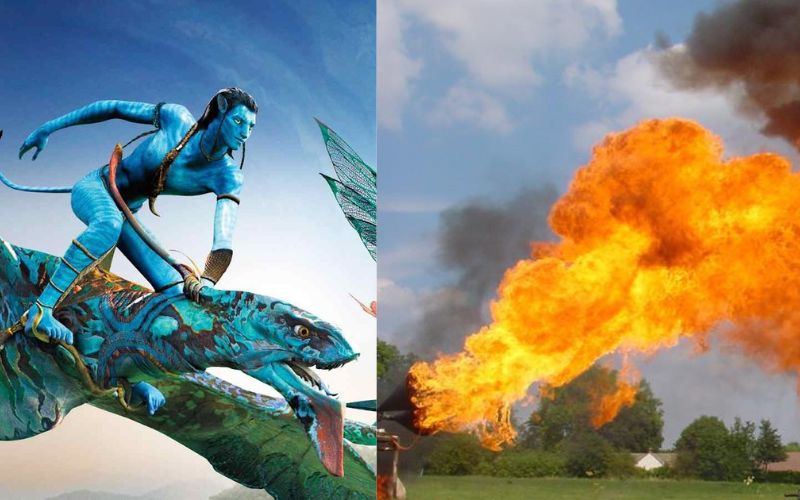The Impact Of Physics Simulations And VFX
Table of Contents
# How Are Physics Simulations Used In VFX?
# What Is the Difference Between Practical Effects And VFX?
# How Is VFX Used in Virtual Reality and Augmented Reality Experiences?
# Are You Willing to Learn More About VFX?
# Conclusion
Modern movies, television shows, and video games all depend on visual effects (VFX), which open up a wide range of creative options not otherwise possible with more conventional filmmaking. Physics simulations, which are used to produce realism and immersion in digital settings, are one of the core components of visual effects (VFX).
Unlike practical effects, VFX gives artists the ability to develop effects that could be impractical to produce in the real world. Virtual reality and augmented reality experiences are being created using VFX techniques, expanding the possibilities of digital narrative and entertainment beyond traditional media formats.
In this blog, we will cover a comprehensive guide of VFX.
How Are Physics Simulations Used In VFX?
A key component of the visual effects (VFX) sector is physics simulation. They are used to imitate real-world physics in a digital environment, resulting in realistic and compelling visual experiences. Here are some significant applications of physics simulations in visual effects:
- Particle Dynamics Simulation: Particles like water, fire, smoke, or debris can move and interact in realistic ways thanks to physics models. VFX artists may create dynamic and aesthetically correct effects by taking into account elements like gravity, friction, and fluid dynamics.
- Rigid Body Dynamics Simulation: This application of physics simulations simulates the motion and collision of objects with predetermined shapes and structures. In order to create visually appealing effects like object disintegration, falling objects, or realistic collision scenarios, VFX artists can precisely model interactions between things.
- Character animation: To produce realistic character movements, physics simulations are also used. VFX artists may create motions that are realistic and convincing by imitating the behavior of muscles, joints, and physical limitations. These simulations increase the realism of the animation by capturing the effect of outside influences like gravity or wind on a character’s body.
- Garments Simulation: To mimic how garments and materials behave, physics simulations are used. VFX artists may produce realistic movements of clothing by imitating the physical characteristics of materials like elasticity and gravity. This increases the plausibility of actors and scenarios.
- Fluid Simulation: Physics simulations are essential for producing lifelike fluid effects, such as water, oceans, or splashes. VFX artists may create visually appealing and convincing fluid simulations by precisely modeling fluid dynamics, surface tension, and viscosity.
In conclusion, the VFX business relies heavily on physics simulations to produce realism and immersion in its visual effects. They enable VFX artists to faithfully reproduce real-world physics, creating enthralling and credible digital settings. You can learn all these techniques through a certified VFX professional course.
What Is the Difference Between Practical Effects And VFX?

Practical Effects:
- Examples include explosions, stunts, prosthetics, miniatures, animatronics, and actual set structures.
- Physical, tangible effects made on set.
- Done in-camera during production, without relying on post-production alteration.
- Provides a sense of physicality and realism
- Offers real-world, useable interactions between performers and actual objects
Visual effects (VFX)
- With the use of CGI, 3D animation, compositing, and other digital tools, visual elements are created or enhanced during post-production. Examples include virtual creatures, environments, weather effects, explosions, changing objects, and changing actors’ appearances.
- Achieves complex and precise effects that are difficult or dangerous to achieve practically
- Seamlessly incorporates elements into scenes
- Achieves fantastical or impossible visuals
- Frequently used in conjunction with practical effects for the desired visual outcome
- Depends on budget, feasibility, creative vision, and the project’s specific requirements
- Choice depends on budget, feasibility, creative vision, and requirements of the project
How Is VFX Used in Virtual Reality and Augmented Reality Experiences?
Virtual reality (VR) and augmented reality (AR) applications both benefit immensely from the immersive experience that VFX provides. In VR, viewers can interact with realistic and interactive virtual settings, characters, and objects that are created using VFX techniques. To do this, virtual environments are brought to life using 3D modeling, texturing, lighting, and animation, giving viewers a sense of presence and engagement.
VFX effortlessly fuses virtual components into the actual world in AR. It improves the user’s experience of and engagement with the world by superimposing digital information, objects, or effects over their field of view. By making realistic holograms, 3D objects, and visual simulations that perfectly mix with the actual environment, VFX makes it possible to create augmented experiences where real and virtual elements coexist.
Real-time rendering, motion tracking, spatial mapping, and computer-generated visuals are frequently used in the implementation of VFX in VR and AR. Together, these technologies enable seamless and immersive user experiences in both VR and AR settings by synchronizing virtual objects with the user’s movements and surroundings.
The ability to explore and engage with virtual and augmented surroundings is made possible by the critical role that VFX in VR and AR play in generating fascinating, realistic, and interactive digital worlds.
Are You Willing to Learn More About VFX?
If you are the one who is willing to learn more about VFX then VFX course is the best thing for you. VFX course covers everything from techniques to practical’s. However, it is really important that you should do your VFX course from the best VFX institute in Kolkata like George Animatrix.
Conclusion
The worlds of film, television, and gaming have been completely transformed by the incorporation of physics simulations in visual effects (VFX). By imitating the rules of physics, these simulations allow VFX artists to produce realistic and fascinating digital environments. The potential of VFX to produce effects that may defy the constraints of the physical world is what distinguishes it from practical effects. VFX goes beyond conventional media forms and is currently a crucial component of virtual reality and augmented reality experiences, raising the bar for digital narrative and entertainment to new heights.


